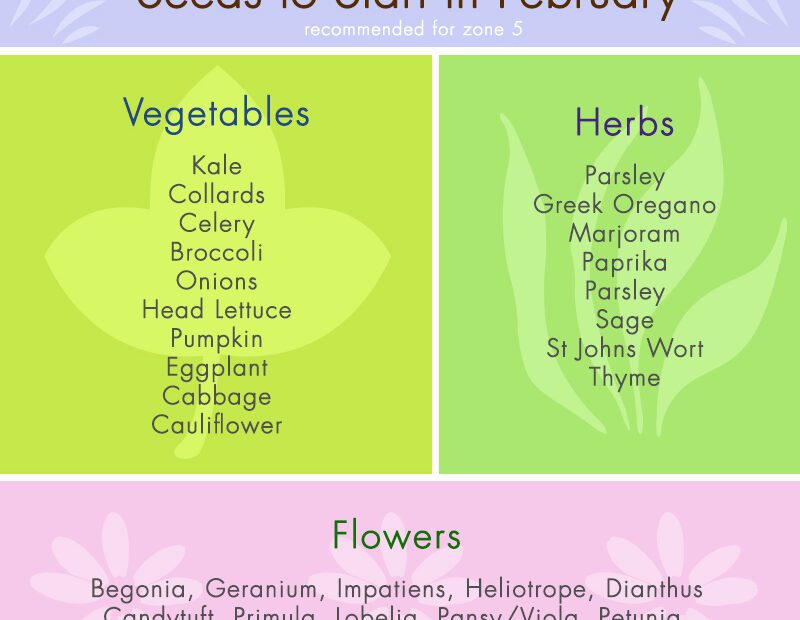
Sprightly February sweeps away the winter blues and injects a tinge of warmth and anticipation into the air. As the last traces of frost gradually fade, avid gardeners eagerly roll up their sleeves, their green thumbs itching to dig deep into the fertile soil. Ah, the joyous dance of nature’s renewal! With the promise of spring just around the corner, now is the perfect time to sow the seeds of botanical dreams. But where to begin? Fret not, dear garden enthusiasts, for we shall navigate the labyrinth of early bloomers, hardy perennials, and delicate annuals. In this article, we shall embark upon a delightful journey through the wondrous realm of seeds that thrive when sown in February. So, grab your gardening gloves, unleash your spirit of adventure, and let us unearth the secrets of Mother Nature’s botanical treasures!

Starting Seeds Indoors in February: Maximizing Your Harvest Potential
In the month of February, avid gardeners can get a head start on their bountiful harvest by starting seeds indoors. This is an excellent way to maximize your harvest potential and ensure a successful growing season. By starting seeds indoors, you have the advantage of controlling the environment, giving your plants a strong start before transferring them to the great outdoors.
When it comes to deciding which seeds to start in February, there are numerous options to choose from. Some popular choices include tomatoes, peppers, eggplants, and herbs like basil and parsley. These plants require a longer growing season and benefit from an early start indoors. Additionally, consider starting broccoli, cauliflower, cabbage, and lettuce as they can also be started in February and easily transplanted outside when the weather permits. Remember to browse through seed catalogues or visit your local garden center, where you can find a wide variety of seeds suitable for indoor sowing in February.
Now, let’s dive into some essential features and tips to keep in mind for successful seed starting in February. The table below highlights three key aspects to maximize your harvest potential:
| Feature/Tips |
Description |
| Proper Lighting |
Ensure your seedlings receive at least 12-14 hours of bright light each day. Consider using full spectrum fluorescent lights or a grow light system to provide the necessary light intensity. |
| Well-draining Soil |
Use a high-quality potting mix that is specially formulated for starting seeds. It should provide excellent drainage while retaining enough moisture for healthy germination and growth. |
| Adequate Air Circulation |
Good air circulation helps prevent fungal diseases and promotes sturdy seedling growth. Use a small fan or ensure that the room has proper ventilation to keep a gentle breeze around the seedlings. |
By starting seeds indoors in February, you set the stage for a productive and abundant garden. So, gather your seeds, prepare your indoor setup, and get ready to watch your plants thrive as you nurture them towards a successful harvest!
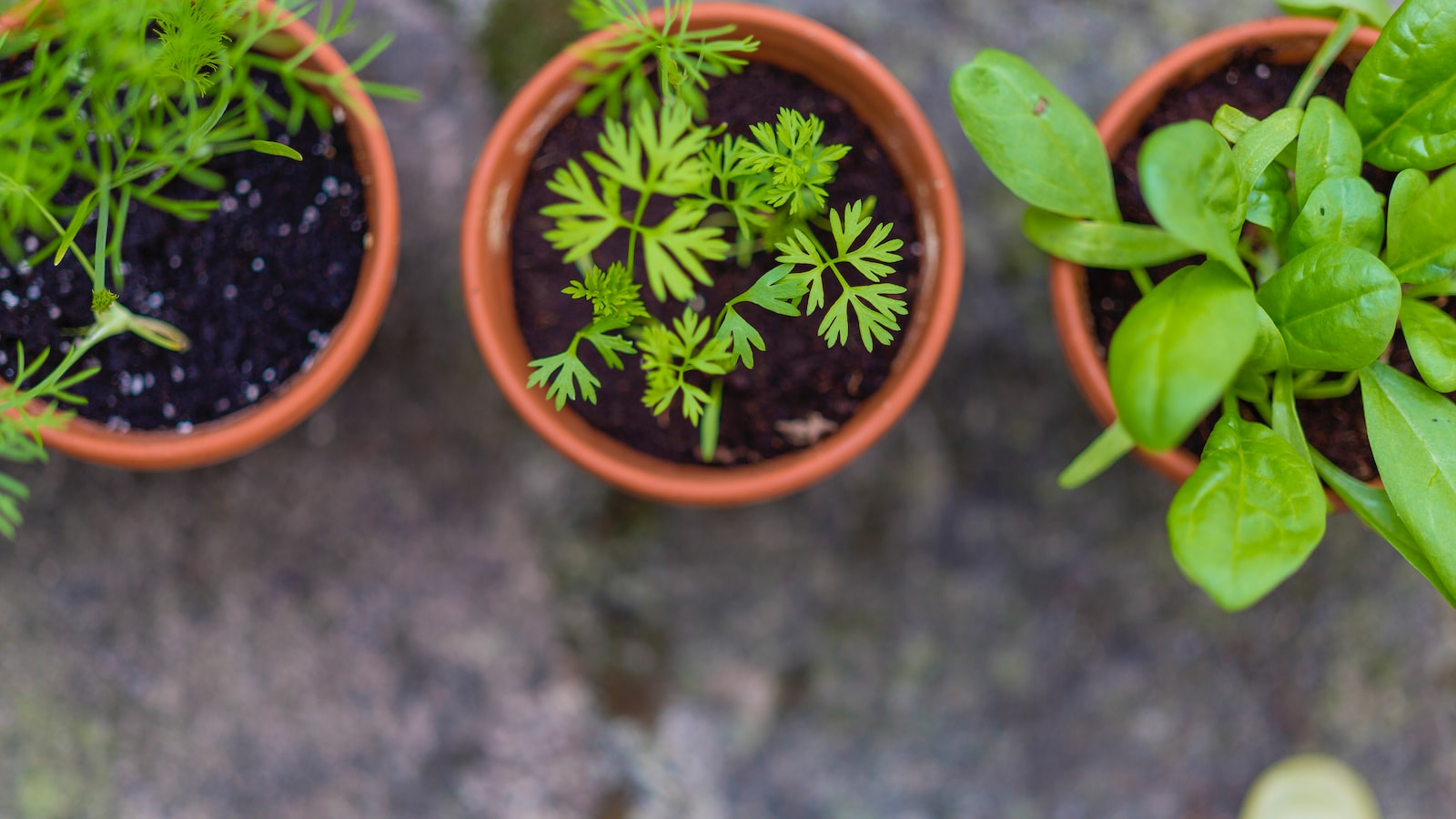
Loading... Seconds Left for
Miniature Orchid Terrarium Gallery!
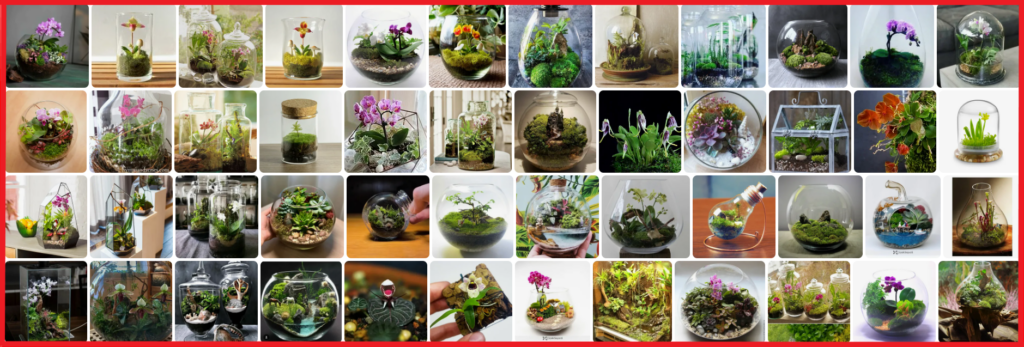
The Best Vegetable Seeds to Start in February for Early Spring Planting
February is the perfect time to get a head start on your spring planting by sowing vegetable seeds indoors. By starting your seeds early, you can enjoy an abundant harvest of homegrown vegetables as soon as the weather warms up. Here are some top picks for the best vegetable seeds to start in February:
1_Tomatoes">1. Tomatoes
Tomatoes are a staple in any vegetable garden, and starting them early ensures a bountiful harvest. Choose from a variety of tomato seeds, such as juicy heirlooms or delicious cherry tomatoes. Transplant them into larger pots once they develop a few true leaves, and you’ll have healthy seedlings ready for the outdoors by spring.
2. Peppers
Add a little spice to your garden by starting pepper seeds in February. From sweet bell peppers to fiery chili peppers, there are endless varieties to choose from. Peppers love warmth, so keep them in a warm, sunny spot and transplant them outdoors once the danger of frost has passed.
3. Salad Greens
If you’re craving fresh, crisp salads early in the spring, start sowing salad greens like lettuce, spinach, and arugula in February. These greens are quick to grow and can be harvested as baby leaves for salads or allowed to mature for a more substantial harvest. With a variety of leaf shapes and colors, you can create beautiful and delicious salads from your own backyard.
width:100%">
| Features |
Tips |
| Early Ripening |
Choose seeds that have an early maturity date to ensure a timely harvest. |
| Indoor Sowing |
Start the seeds indoors in seed trays or small pots to provide them with a warm and controlled environment. |
| Hardening Off |
Gradually acclimate the seedlings to outdoor conditions by exposing them to increasing amounts of sunlight and wind. |
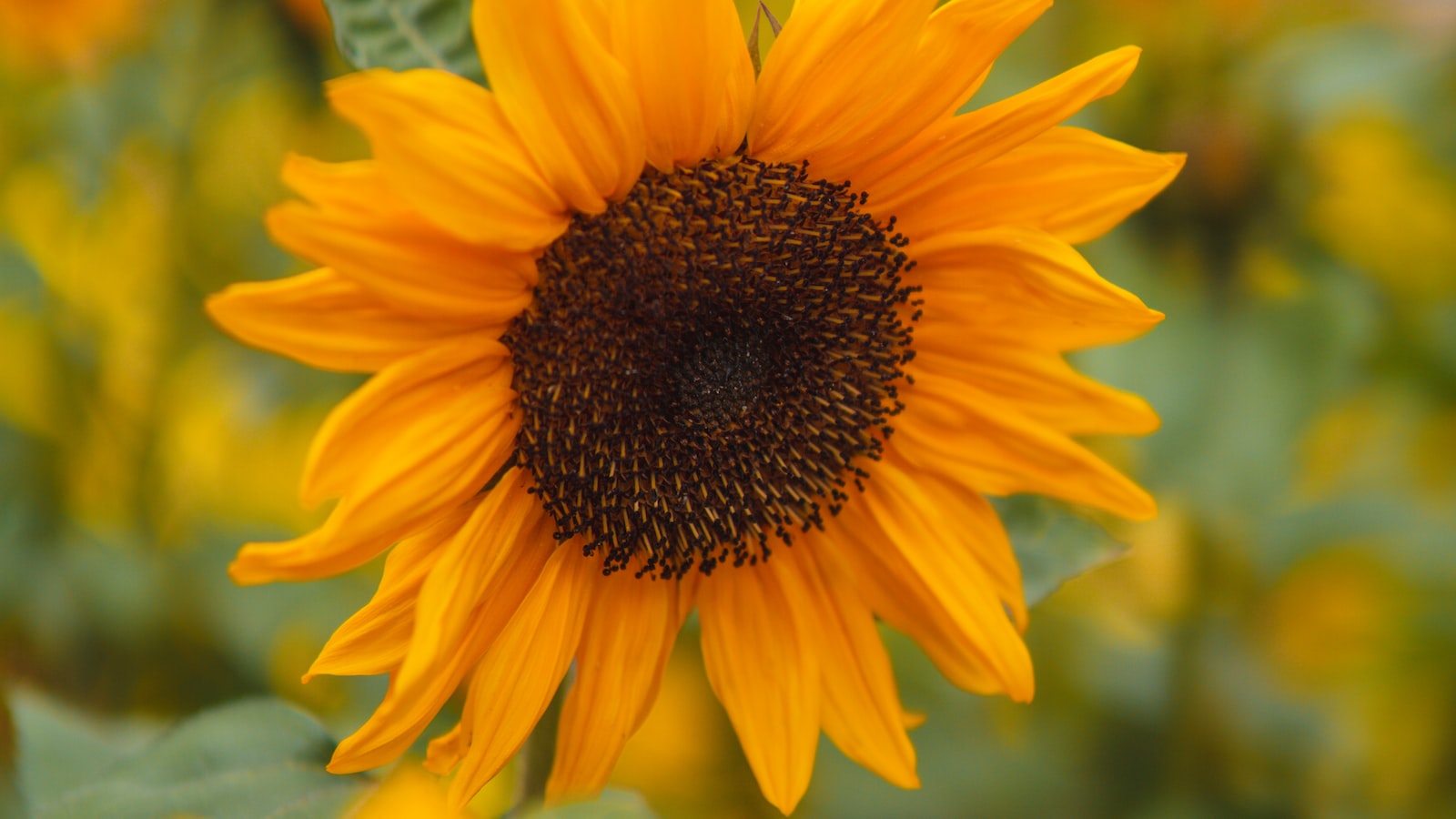
Embrace Blooming Beauty: Flower Seeds to Start in February for Vibrant Spring Displays
As February rolls around, it’s time to start thinking about your vibrant spring displays and embracing blooming beauty. This is the perfect month to begin sowing your flower seeds, allowing them ample time to germinate and flourish into stunning blooms. Whether you’re a seasoned gardener or a novice, here are some flower seeds that you can start in February to ensure a breathtaking display in the coming months.
In February, you can start sowing seeds of early-blooming annuals such as sweet peas, pansies, and calendulas. These delightful flowers not only add a pop of color to your garden but also tolerate cooler temperatures, making them an excellent choice for an early start. Additionally, consider starting seeds of hardy perennials like coneflowers, rudbeckias, and asters. These resilient plants will establish strong root systems during the colder months, resulting in beautiful blooms year after year.
To
help you plan your flower sowing endeavors, here are some features and tips to consider:
| Features |
Tips |
| 1. Early-blooming varieties: |
1. Start seeds indoors: Sow the seeds in trays or pots filled with well-draining seed-starting mix. |
| 2. Best suited for cooler temperatures: |
2. Provide adequate light: Place seed trays in a sunny location or use grow lights to ensure proper growth. |
| 3. Hardy perennials: |
3. Transplant carefully: Once the seedlings have developed a few true leaves, gently transplant them into larger containers or directly into the garden. |
By starting your flower seeds in February, you’re giving yourself a head start on creating a vibrant, blooming oasis in your garden. So grab your gardening gloves and get ready to nurture these seeds into glorious displays of color that will provide joy and beauty throughout the spring season.
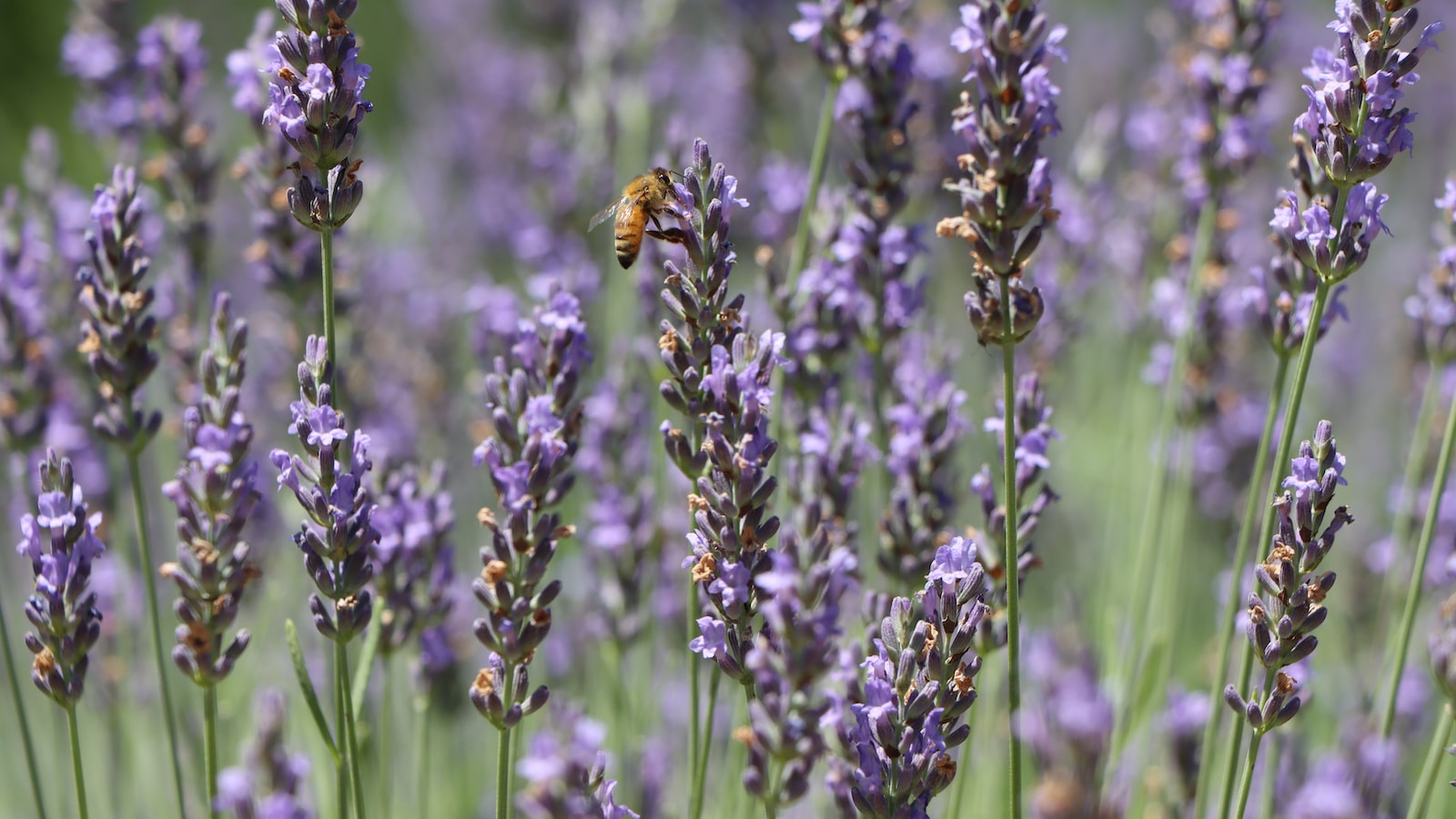
Boost Your Herb Garden: Essential Seeds to Start in February for Year-round Flavor
When it comes to cultivating a thriving herb garden, starting seeds in February can give you a head start and ensure a year-round abundance of flavors. February marks the transition from winter to spring, and it’s the perfect time to sow seeds that will flourish in the upcoming seasons. From aromatic herbs like basil and cilantro to versatile culinary stars like parsley and dill, here are some essential seeds to kick-start your herb garden:
- ng>Basil: Known for its refreshing aroma and delightful taste, basil is a must-have herb in every garden. February is the ideal time to plant basil seeds indoors to ensure robust growth.
- Cilantro: Add a burst of fresh flavor to your dishes by growing cilantro. Starting cilantro seeds in February will allow you to enjoy its zesty leaves throughout the year.
- Parsley: With its rich green color and distinctive taste, parsley is a versatile herb that enhances numerous culinary creations. Ensure a continuous supply by planting parsley seeds in February.
- Dill: Known for its feathery foliage and unique fragrance, dill is an excellent addition to any herb garden. Sowing dill seeds in February will provide you with a steady supply of aromatic herb leaves.
| Tips and Features |
|
| 1. Start seeds indoors in small pots or trays with good drainage. |
2. Use a high-quality potting mix to ensure healthy growth. |
| 3. Keep the soil moist but not waterlogged. |
4. Place pots in a sunny location to provide adequate light for growth. |
| 5. Thin out seedlings to allow proper spacing for optimal development. |
6. Remember to label your pots to keep track of the different herb varieties. |
Frequently Asked Questions
Q: Which plants can I start growing from seeds in February?
A: Ah, February - the perfect time to embark on your green thumb adventures! Choose from an exciting array of plants like tomatoes, peppers, and eggplants. This is also the ideal month to sow flowers that will bring vibrant colors to your garden, including marigolds, pansies, and sweet peas.
Q: Are there any cold-loving seeds that can withstand February’s frosty temperatures?
A: Absolutely! Fear not, chilly gardeners. There are some resilient souls that thrive in colder weather. Spinach, kale, and lettuce are hearty greens that can handle the frost. Additionally, radishes and carrots happily brave the winter winds, showing off their underground glory while the rest of your garden sleeps.
Q:
Any exotic or out-of-the-ordinary seeds worth considering in February?
A: Ready to impress your friends and neighbors with an extraordinarily unique garden this year? Then look no further! February is the designated time to start growing interesting varieties like artichokes, lemongrass, and kohlrabi. These distinctive plants will not only be conversation starters but will also add a touch of culinary flair to your dishes. Bon appétit! As our gardening journey in February comes to a close, we find ourselves brimming with anticipation for the colorful tapestry the coming months will weave. With frostbitten fingers and nurturing hearts, we’ve carefully chosen the seeds that will blossom into majestic wonders, each one telling its own enchanting tale.
Nestled within the soil, our gardens hold the promise of new life, patiently waiting for the tender caress of sunlight to awaken their potential. Seeds of hope and dreams, they embody the resilience of nature, a powerful reminder that even in the harshest of times, growth is bound to find its way.
February, with its cold embrace, ushers in an array of possibilities for the seasoned gardener or the curious novice. Delicate petals dancing to the rhythm of the wind, fragrant herbs beckoning taste buds with their aromatic allure, and sturdy vegetables reaching skyward to provide sustenance - the canvas of our gardens awaits its artist’s touch.
In this�
00C; month of renewal, we have sown the seeds of brilliance. Luscious tomatoes, radiant sunflowers, vibrant peppers, and an array of dazzling blooms stand poised to break free from their humble beginnings. We have crafted our own symphony of life, carefully selecting those seeds that speak to our passions, our vision for the months ahead.
As we bid adieu to February, we embrace the journey that lies before us. In the nurturing embrace of spring, we will witness our tiny seeds evolve into majestic guardians of beauty and vitality. So, with watering cans in hand, let us embark on this poetic adventure, tenderly watching our gardens grow, absolute marvels of nature that they are.
Hello! I'm Jessica Owen, an avid gardener and proud contributor to Up-Gardening.com. Gardening is my passion, and I'm delighted to share my green-thumb experiences with you. From planting tips to nurturing blooms, I'm here to help you cultivate your own slice of paradise. Let's grow together in the garden!
Latest posts by Jessica Owen
(see all)




